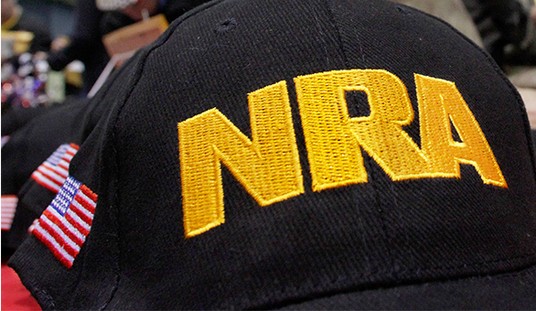
Every so often, social media pops up with a joke image that is supposedly a journalist’s guide to firearms. Everything shown is labeled “AK-47” except for the AK, which was labeled “AR-15.” It’s a routine joke for those of us who understand guns and who often see journalists mangle the facts when it comes to firearms. It’s awful, painful even.
Now, a website called Journalist’s Resource has decided to give its readers some tips on how to report on firearms more effectively.
It actually doesn’t suck.
Guns are one of the most divisive topics in the United States, so it’s crucial for journalists to get the details right — down to the type and style of weapon being discussed.
Nationwide, more than four in 10 adults say they either own a gun or live in a gun-owning household, according to the Pew Research Center. When reporters make mistakes, audiences may see their work as sloppy or, worse, perceive errors as an intentional effort to mislead. Regardless, when the news media get facts wrong, audiences — especially gun owners — may not trust the information they provide.
To warn reporters about pitfalls they may encounter in covering guns and brief them on some basic terminology, Journalist’s Resource teamed up with two reporters who have lots of experience writing about firearms. We thank Henry Pierson Curtis, who covered gun and drug trafficking and other crime at the Orlando Sentinel for 25 years before retiring in 2016, and Alex Yablon, who has covered the business of guns and gun policy for more than three years at The Trace, for helping us create this tip sheet.
Here are seven things journalists should keep in mind when reporting on guns:
- People who die in mass shootings represent a small fraction of the number who die from gunshots in the United States.
In 2016, 38,658 people in the U.S. died from injuries caused by firearms, according to a July 2018 report from the National Center for Health Statistics. The majority of gun deaths — 22,938 — were suicides. Another 14,415 people were murdered and 495 died after a gun accidentally discharged.
…
- Expect pushback from gun enthusiasts if you call an AR-15 an “assault rifle.”
An assault rifle, by some definitions, is a military firearm capable of fully automatic fire, meaning it can fire without pause until empty. AR-15-style guns are semi-automatic, meaning they fire a bullet for each pull of the trigger.
Organizations such as the National Shooting Sports Foundation (NSSF), a firearms industry trade association, refer to AR-15-style guns as sporting rifles and warn against confusing them with military rifles such as the M-16. “These rifles are used for many different types of hunting, from varmint to big game,” the organization explains on its website.
The AP Stylebook characterizes the AR-15 as a type of “assault weapon” — not assault rifle. According to AP style, assault weapons are “the civilian version of the military carbine with a similar appearance.”
It’s worth pointing out that “AR” doesn’t stand for assault rifle or automatic rifle. It comes from ArmaLite, the name of the company that developed that rifle style.
It also includes an admonition to understand the difference between a “bullet” and a “casing.”
As I said, it doesn’t suck.
Now, this is only a drop in the bucket, but if more journalists read this, they might stop making such fools of themselves when the topic of guns comes up. Then again, I suspect those with national news organizations like CNN, MSNBC, the New York Times, and similar outlets will figure they’re above needing to use such resources.
Pro tip: You need it worse than anyone.








Join the conversation as a VIP Member